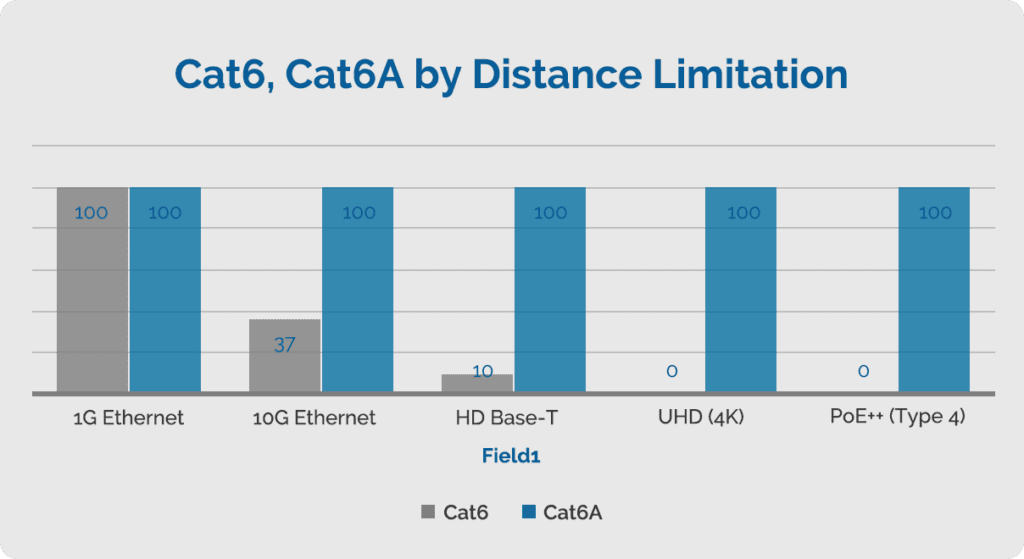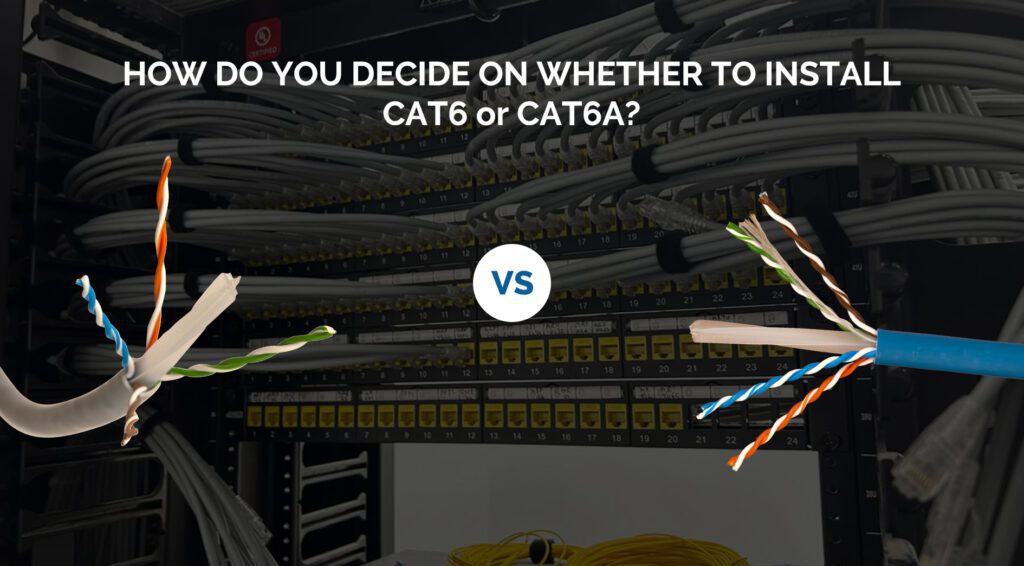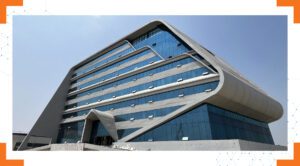The answer to this question is actually much simpler than you may think. There are various factors to be considered before going for the right connectivity solutions, and a few common quick questions are:
- What future applications do you see your organization using?
- What growth to your network do you expect over the next five years in terms of data transmission and the number of users?
- What is the expected life of the infrastructure/building? Will it be 10, 20, 25, or even 30 years?
- Where are international cabling standards heading?
- What is your budget or expected cost?
- What will the cost be of re-installing a new network to cope with future speeds?
In case you are still lacking clarity and do not have answers, then below is a simple answer why CAT6A is always a better choice/option:
- Its ability to future-proof against increased networking speeds.
- CAT6A’s backward compatibility with CAT6 or CAT5e.
- Increasing demand for PoE for surveillance and Wi-Fi.
- Higher bandwidth demand in network transmission & data centers.
- Better ROI compared to re-installing a new network in case of a surge in transmission rate.
- Distance limitation of 10G speed on CAT6 solutions.
- Limitation of higher PoE on CAT6 solutions.
- Distance limitation of PoE++ on CAT6 solutions for surveillance projects.
- Increasing demand for transmission traffic in every aspect of communication.
- On higher resolution video transmission (4K, 8K, etc.), CAT6 is practically not possible.
- Heavy file download delay time on CAT6 solutions.
TIA 568 D-TR42 (Customer Premises Structure Cabling) on MPTL standards approving Direct Attach Plug for ceiling application for Building Automation, CCTV, Access Control, and a few other applications, helps in identifying CAT6A as the backbone cabling solution for the entire building.
There has been a paradigm shift in network speed, its requirements, usage, and bandwidth. Over the last few decades, from FAST ETHERNET (FDDI, ATM 155) technology in 1995 to GIGABIT ETHERNET (ATM 622) technology in 2005, it was a 10-year journey. But within the next 10 years, i.e., 2005 to 2015, the transmission speed moved rapidly, i.e., from GIGABIT speed to 100G. And at a similar rate now, the transmission testing and implementation at various Data Centers are happening on 400G.
Although Fiber optic solutions with SM cabling and OM4 & OM5 play a major role for backbone architecture of speeds above 10G to 400G, CAT6A cable with 10G backbone on Horizontal cabling solutions is now a new basic requirement for new buildings in order to support Gigabit network applications and support bandwidths of up to 500MHz.
Like CAT6 was the beginning of replacement of CAT5E in residential environments, Category 6A (CAT6A), which supports data rates of 10G up to 100 meters and a bandwidth of up to 500MHz, has begun to grow in popularity. Many Data Centers, hospitals, and universities have adopted CAT6A as a new minimum requirement. Other developments in CAT7, CAT7A, and also CAT8 are continuing, which will support even higher data transfer rates and bandwidths.

Testing:
CAT6A solutions call for more testing than standard CAT6 or solutions. Network testers pre-configured for the link can quickly and effectively test the performance of the network.
The alien crosstalk starts at 350MHz, and comparing with CAT6, CAT6A requires additional testing:
- AACRF – Alien Attenuation Crosstalk Ratio Far End
- AFEXT – Alien Far End Crosstalk
- ANEXT – Alien Near End Crosstalk
- PSAACRF – Power Sum Alien Attenuation Crosstalk Far End
- PSAFEXT – Power Sum Alien Far End Crosstalk
- PSANEXT – Power Sum Alien Near End Crosstalk
Summary:
CAT6A solutions support data transmission rates at 10Gbps with higher bandwidth of 500MHz. CAT6A cables are designed and manufactured with true copper of 23 AWG (.57mm) and have additional and tighter twists and additional insulation to reduce crosstalk. CAT6A is also backward compatible with CAT6 and CAT5E; however, speeds are always limited and will perform to the lowest category cable or connector that is installed in the link. CAT6A is fast becoming the most cost-effective solution as it is seen as a future-proof cable system. CAT6A components are used in Class EA networks as defined in ISO/IEC 11801 and TIA/EIA 568.
One of the experienced bottlenecks with CAT6A solutions is the actual size and weight of the cable. CAT6A cables weigh approximately 40% more compared to CAT6 solutions. This is majorly due to more copper, with additional insulation and jacket size, etc. This results in larger cable trays and conduits. Whereas the bundle size remains as per installation practice of 6/12/24, etc., as per site requirement.
However, with increased installation due to higher demands and higher R&D, with time, the process of Installation/Termination time of CAT6A and CAT6 remains the same.
One of the major arguments in favor of installing CAT6A infrastructure is to future-proof the network. Therefore, while we are planning for any new infrastructure with an expected timeline of 10 years or more, like a lifetime expectation of 30 years, CAT6A should be considered as the only option.
Recommendation:
In fact, when considering the use of CAT6A components in a 10Gbps, Class EA network, consider the following factors:
- Any new infrastructure while considering life expectation of more than 10 years.
- Infrastructure with higher video transmission requirements like HDBaseT, UHD, or more.
- Enhanced PoE (PoE Type 3 & 4) should always be on CAT6A solutions.
- Surveillance systems with expectation of better video quality should always go for CAT6A.
- Wireless transmission should have 10G Backbone on CAT6A.
- Healthcare, Education, Government offices, Data Centers are always recommended to use CAT6A solutions.
Disclaimer: This white paper is published by the Authors from their field and practical experience in the ICT Cabling industry. Derwiser India assumes no responsibility or liability for any errors or omissions in the content of this site.







